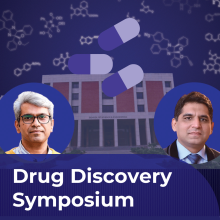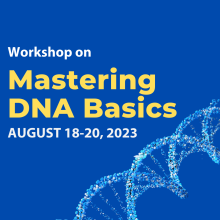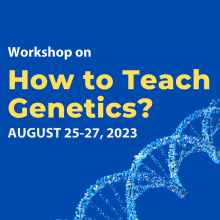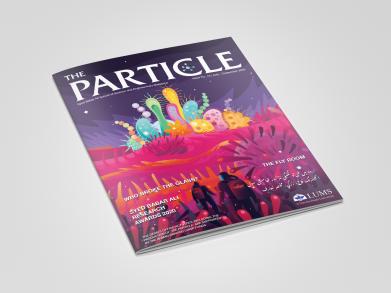The work described in this thesis profiled the transcriptome of undifferentiated (TSCs) and 4-days differentiated (TGCs) cells through RNA-seq and identified ~7,800 differentially expressed genes which include regulators of the cell cycle, apoptosis, cytoskeleton, cell mobility, embryo implantation, metabolism and various signaling pathways. We revealed that several mitotic proteins, including Aurora A kinase, were downregulated in TGCs and that the activity of Aurora A kinase is required for the maintenance of TSCs. We also identified hitherto undiscovered, cell-type-specific alternative splicing events in 31 genes and expression of 19 novel exons in 12 genes in TSCs and TGCs. Similarly, we discovered that the expression of Cyclin-dependent Kinase 1 (Cdk1) was downregulated in fused BeWo cells and its inhibition through small-molecule inhibitor induced fusion in these cells. The role of Caspase3 downregulation in conferring resistance to genotoxic stress-induced apoptosis in developmentally programmed polyploid cells was also investigated. Finally, we discovered that the polyploid nuclei in fused BeWo cells result from nuclear fusion following the fusion of the cells. Overall, results described in this dissertation uncover several potential regulators of TSC differentiation and TGC function, thereby providing a valuable resource for developmental and molecular biologists interested in the study of stem cell differentiation and embryonic development. Moreover, these results will help in understanding the role and regulation of apoptosis in differentiated TGCs.
The Department of Life Sciences at LUMS offers rigorous undergraduate and graduate programs, which impart cutting-edge knowledge of 21st-century life sciences exposing students to its theoretical as well as experimental aspects. Two streams are offered to the aspiring Biology majors: Molecular and Cellular Biology (MCB) and Computational Biology (CB). Biology is important since it aims to tell us about the natural world around us. Recent advances have brought the subject to the forefront of contemporary sciences and have integrated it with numerous disciples, including chemistry, mathematics, physics, electrical engineering and computer science. This has led to the emergence of new areas of study and research such as molecular biology, cell and developmental biology, computational biology, diseases, biophysics and systems biology, all of which are in the realm of the biology program at SBASSE.
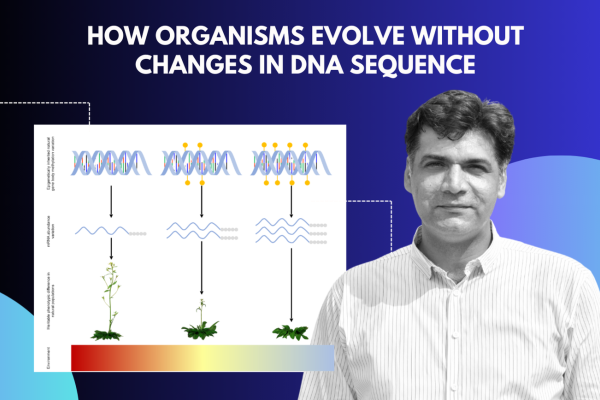
For nearly a century, evolutionary biology has been shaped by Modern…
For nearly a century, evolutionary biology has been shaped by Modern Synthesis, or Neo-Darwinism. This framework rests on the idea that changes in DNA sequences, mutations, are the fundamental drivers of adaptation and the vast diversity of life we see today. Through natural selection and genetic drift, genetic variation is filtered, refined, and passed down across generations.
But a new study published in Nature Plants suggests that the story of evolution has another chapter. Researchers have found that plants can influence traits and evolve without altering their DNA sequence at all. Instead, they use chemical modifications called methylation tags. Much like sticky notes on the pages of a book, these tags do not rewrite the text itself but signal which parts are most important to read.
The study was led by Dr. Zaigham Shahzad, Associate Professor at the Department of Life Sciences, SBA School of Science and Engineering, LUMS, and Dr. Daniel Zilberman, Professor at the Institute of Science and Technology, Austria, in collaboration with researchers from John Innes Center, Norwich, UK, and Michigan State University, US. The team studied Arabidopsis thaliana, a small mustard-like plant widely used in biology, to distinguish the effects of genetic mutations from those of epimutations, changes in DNA methylation patterns, on natural phenotypic variation. Analyzing gene expression across more than 10,000 genes in 625 natural genotypes, the researchers showed that heritable DNA methylation explains as much phenotypic diversity as conventional genetic mutations.
Through further genetic analyses, they uncovered that gene body methylation plays a key role in regulating gene expression. By tracking methylation patterns, they could identify genes linked to important traits such as nutrient uptake, flowering time, and plant fitness. Remarkably, their “epigenome-wide association” mapping approach proved 1.5 times more precise than traditional genome-wide association methods.
One striking advantage of this epigenetic system lies in its speed. While genetic mutations occur slowly, epimutations happen at rates 100,000 times higher, allowing plants to experiment with traits without making permanent genetic changes. This ability is particularly valuable in rapidly changing environments.
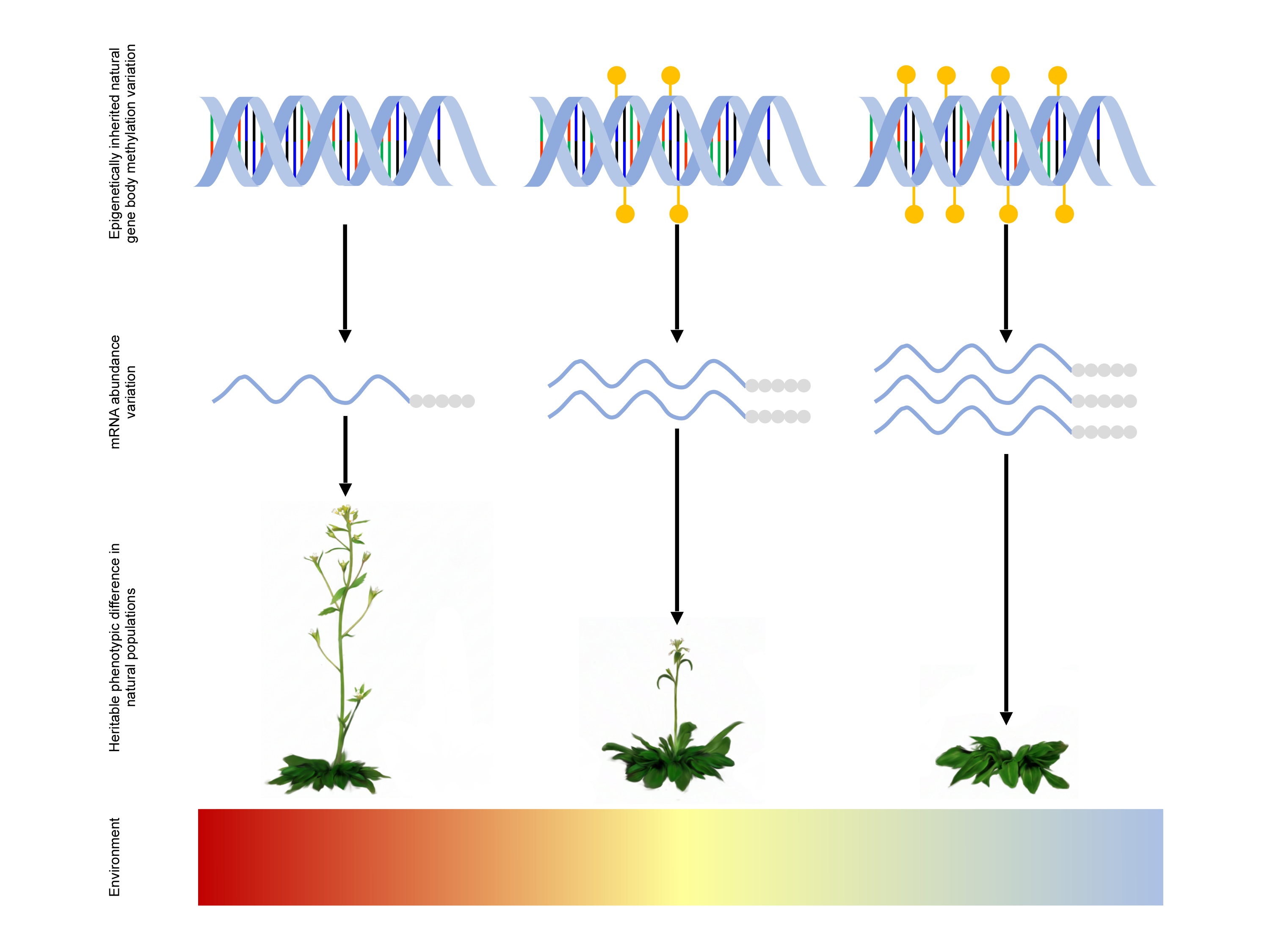
The researchers also found evidence that plants are already putting this system to use. In regions with higher levels of nitrogen dioxide, which is a pollutant released by human activity, Arabidopsis plants flower earlier. This shift, they discovered, is linked to methylation changes at FLC, a well-known flowering control gene. Since the rise of nitrogen dioxide pollution has occurred only over the past few decades, traditional genetic evolution alone would not have kept pace. Epigenetic changes, however, seem fast enough to help plants adapt in real time.
These findings expand our understanding of how life evolves. Beyond DNA sequence changes, organisms have access to a parallel system, one based on chemical tags layered onto existing genes. This research underscores how scientists at SBASSE, LUMS, are collaborating internationally to address fundamental questions in biology, showing that life’s adaptability runs deeper than DNA alone.
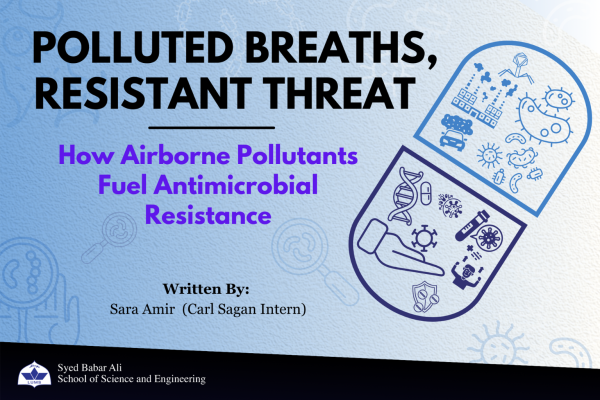
In the hustle and bustle of Pakistan's healthcare landscape, a silent…
In the hustle and bustle of Pakistan's healthcare landscape, a silent war is raging, and it's not against a visible foe but rather microscopic troublemakers – antibiotic-resistant microbes.
Antibiotic resistance poses a growing threat to health globally. According to a report by Fleming on Antimicrobial Consumption by 700,000 individuals each year lose their lives to resistant infections. In Pakistan, this issue is exacerbated by a lack of antimicrobial stewardship in hospitals, indiscriminate antibiotic prescriptions, and a surge in respiratory diseases due to polluted air.
Healthcare providers, lacking the much-needed antimicrobial stewardship, are caught in a loop of overreliance on intravenous and oral antimicrobials. It's a revelation that makes you wonder – are we unintentionally brewing a storm of resistance right under our noses?
There's a surprising twist in the narrative of antimicrobial resistance. The air we breathe carries pollutants and potentially acts as a highway for antibiotic-resistant genes. A study by Lancet, a reputed medical journal, reveals a compelling connection between PM 2.5 air pollution and antibiotic resistance. PM 2.5 refers to particulate matter with a diameter of 2.5 micrometers or smaller. As these particles carry bacterial genomic material, inhaling them contributes to incorporating resistant genes into opportunistic pathogens, exacerbating antibiotic resistance.
Analyzing global data from 116 countries between 2000 and 2018, the study estimated that a 10% rise in annual PM 2.5 led to a 1.1% increase in aggregate antibiotic resistance, resulting in approximately 43,654 premature deaths. Regional variations highlighted potential significant increases in antibiotic resistance in Africa and Asia. Notably, for Pakistan, a 10% PM 2.5 elevation was predicted to increase antibiotic resistance by 2.6%.
To tackle this, Dr. Shaper Mirza has been at the forefront of addressing antibiotic resistance in Pakistan. She is actively engaged in projects addressing different facets of antibiotic resistance and stewardship. She participated in development of the first National Action Plan for Antimicrobial Resistance in Pakistan. The initiative involves identifying rates of antimicrobial resistance from a One-Health perspective in Pakistan. This was the first effort of its kind which furnished sufficient data suggesting resistance across all sectors which include human health, animal health and agriculture. The investigation and its outcome led to the development of National Action Plan for AMR in Pakistan. The National Action Plan was implemented in Pakistan in 2017 and currently there are 43 sentinel sites collecting and reporting data on antimicrobial resistance strains. The Situation analysis for National Action Plan was done in collaboration with Global Alliance for Antimicrobial Resistance Partnerships (GARP). The GARP consortium, comprising seven countries, collaborates to exchange knowledge, build capacity, and develop antimicrobial stewardship guidelines.
To improve on stewardship practices, Dr Mirza in collaboration with Pakistan Kidney and Liver Institute (PKLI) developed two courses on adult and pediatric antimicrobial stewardship. Both courses were very well attended both by physicians and basic science researchers working in the field of antimicrobial resistance.
Tips from the experts:
As Pakistan grapples with the dual challenges of smog and antibiotic resistance, practical steps can make a difference. When the air is thick with smog, consider preventive measures like wearing masks, frequent nasal cleaning to minimize pollutant exposure and emphasizing a high-protein diet to bolster immune systems.
While smog-induced respiratory symptoms might initially prompt concern, antibiotics are specifically designed to combat bacterial infections, not viral foes. Viruses, often the culprits behind seasonal respiratory ailments, don't respond to antibiotics. Therefore, before rushing to antibiotics, look for telltale signs of a bacterial infection – persistent high fever, green or discolored mucus, and specific radiological findings in chest X-rays. If symptoms persist, consult a healthcare professional who can guide you on the most effective and responsible course of action. By adopting these practices and following World Health Organization’s (WHO) guidelines for antibiotic usage, we protect ourselves from the smog's impact and contribute to the collective effort to preserve the effectiveness of antibiotics for when they're truly needed.
After all, a breath of fresh air should be just that – fresh and invigorating!

Picture a grand orchestra, with each musician playing a crucial role…
Picture a grand orchestra, with each musician playing a crucial role in creating a harmonious symphony. In a similar vein, researchers at the Department of Biology at SBASSE, LUMS, have uncovered a key 'conductor' in the biological orchestra of gene regulation controlling cell fates – the Mask protein. Just like a conductor leads an orchestra, the Mask protein in fruit flies directs the activity of cell fate specific genes, ensuring they play their parts at the right times.
Research led by Ammad Shaukat and Mahnoor Hussain Bakhtiari, as the first authors under the supervision of Dr Muhammad Tariq, has been published in the prestigious journal Developmental Biology. Their study reveals that the Mask protein in fruit flies shares functional traits with the Trithorax group (trxG) proteins. Unlike the Polycomb group (PcG) proteins, which silence gene expression, trxG proteins play a pivotal role in sustaining the active state of genes, ensuring their continuous and proper expression.
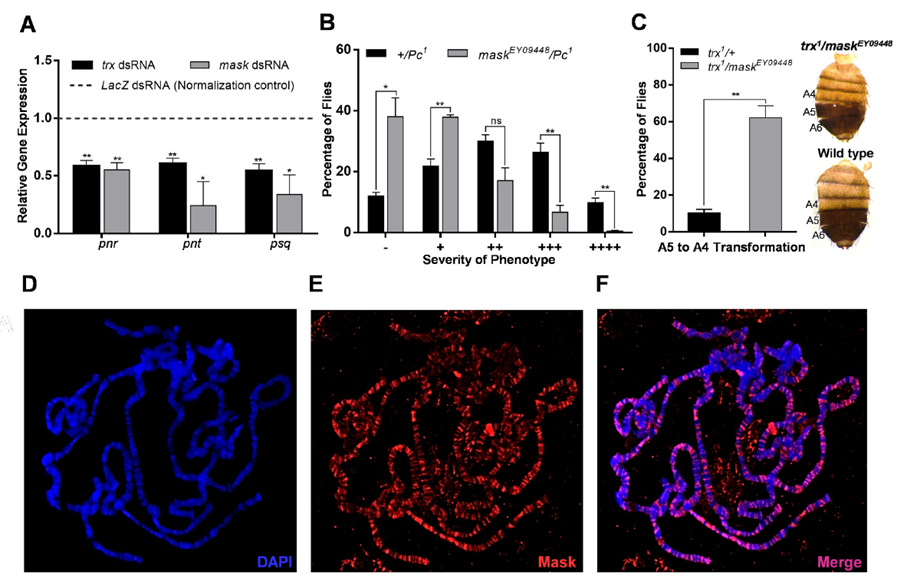
The study essentially explores how Mask operates at the molecular level. In every cell, genes are constantly being turned on and off, a process critical for proper functioning. Mask plays a role similar to a switch, helping to keep certain genes in the 'on' position. This is especially important during an organism's development, where precise gene activity patterns are essential for normal growth and formation of different cell types.
The research team found that Mask binds to areas in chromosomes marked by H3K27ac, a chemical tag indicating active gene regions. When Mask levels were reduced, these active regions showed changes in H3K27ac, leading to alterations in gene expression that are crucial for the development and identity of cells. They have also discovered that Mask counteracts repression by the PcG to ensure activation of cell type specific genes which are linked to maintenance of cell fates.
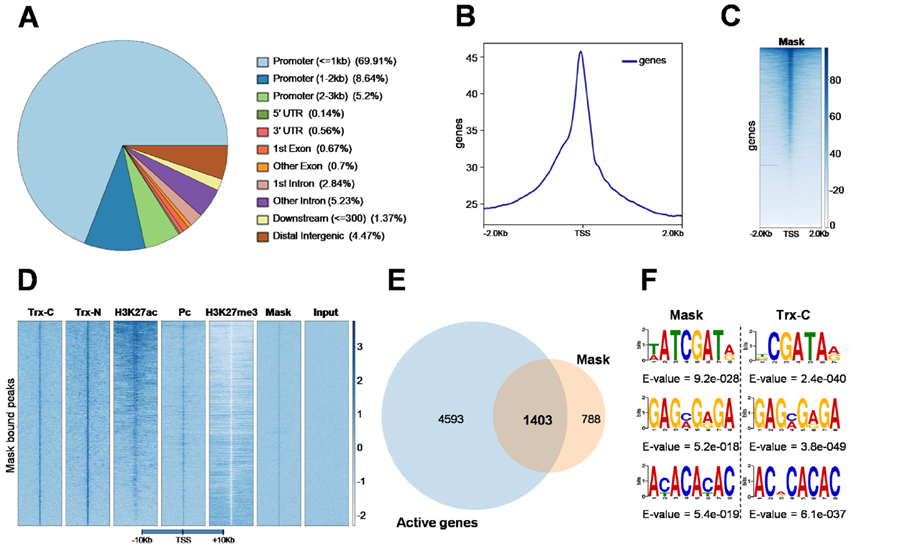
By examining fruit flies, a common model organism in genetics, the researchers identified that Mask interacts with specific sites in chromosomes where other trxG proteins are also present. When the Mask is not present, or its levels are altered, the normal pattern of gene activity is disrupted, leading to developmental abnormalities. Since Mask belongs to a specific class of proteins known as cell signaling factors, the study by Tariq Lab opens a new avenue that may help link cell signaling and cell fate maintenance in future.
This discovery is akin to finding a new way to understand and potentially direct the biological orchestra in humans. It opens possibilities for new treatments for diseases, such as developmental disorders and cancers, where the genetic symphony goes awry. The conservation of this mechanism in flies and mammals suggests that the role of Mask may be a universal theme in the biological orchestras across species.
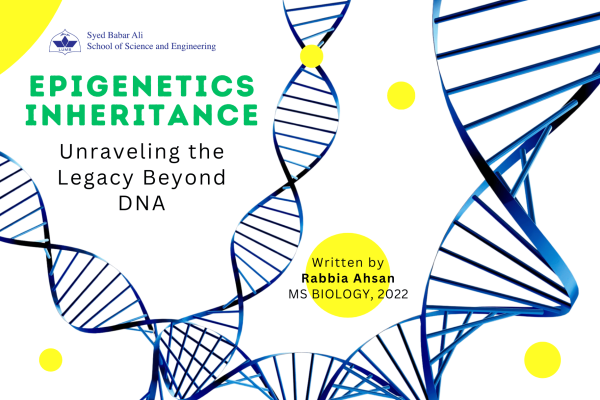
"For neither inherited genes nor environmental factors…
"For neither inherited genes nor environmental factors alone can account for the full range of variations seen in human health and disease." - Randy Jirtle, Epigenetics Pioneer
For many years, inheritance was synonymous with DNA, the genetic blueprint passed down from generation to generation. However, emerging research in the field of epigenetics has revealed an additional layer of inheritance that goes beyond the DNA sequence itself. In his groundbreaking book, "Epigenetics: How the Environment Shapes Our Genes," Richard C. Francis writes, "Epigenetics offers a new perspective on the nature-versus-nurture debate, suggesting that it is not just our genes but how our genes are regulated that matters."
In other words, epigenetics shows that both our genetic makeup and the environmental factors that influence gene expression are equally important in shaping who we are and how we develop. It emphasizes the dynamic interplay between our genes and the environment, challenging the notion that genetics alone dictates our destiny.
Epigenetic modifications, including DNA methylation, histone modifications, and non-coding RNAs, are crucial in regulating gene expression patterns without altering the DNA sequence. Recent studies have shown that these modifications can be transmitted from parents to offspring, potentially influencing phenotypic traits and disease susceptibility across multiple generations. In his seminal paper, Conrad Waddington, the father of epigenetics, described the epigenetic landscape as "the interplay of the environment and genes, a dance influenced by chance."
Epigenetic marks can be transmitted not only to the immediate offspring but also across several generations, resulting in transgenerational epigenetic inheritance. Research by Eric Miska and colleagues at the University of Cambridge demonstrated that small RNA molecules, called small interfering RNAs (siRNAs), can be inherited and affect gene expression in future generations.
As Dr. Michael Skinner, a pioneer in transgenerational epigenetic research, remarks, "Epigenetic inheritance challenges the traditional notion of Darwinian evolution."
Various environmental factors, such as diet, stress, and exposure to toxins can influence epigenetic modifications. Studies on the Dutch Hunger Winter, a period of famine during World War II, revealed transgenerational effects on the health of subsequent generations. According to Dr. Moshe Szyf, an epigenetics researcher, "Environmental influences can leave a lasting imprint on our genes, affecting not only our own health but also that of future generations."
Epigenetics and Evolution:
A Paradigm Shift
Imagine a world where diseases can be prevented, treated, or even reversed by targeting the intricate web of epigenetic modifications. Envision a future where we unravel the mysteries of transgenerational inheritance, unlocking the potential to create healthier generations through the optimization of environmental factors.
Epigenetic inheritance introduces a new perspective on the mechanisms of evolutionary change. Researchers have observed rapid phenotypic variation through epigenetic modifications in response to environmental stimuli. In their book "The Epigenetic Revolution," Nessa Carey and Randy Jirtle explain how epigenetic changes can facilitate adaptation and survival in fluctuating environments. Imagine a world where diseases can be prevented, treated, or even reversed by targeting the intricate web of epigenetic modifications. Envision a future where we unravel the mysteries of transgenerational inheritance, unlocking the potential to create healthier generations through the optimization of environmental factors. Epigenetic inheritance introduces a new perspective on the mechanisms of evolutionary change. Researchers have observed rapid phenotypic variation through epigenetic modifications in response to environmental stimuli. In their book "The Epigenetic Revolution," Nessa Carey and Randy Jirtle explain how epigenetic changes can facilitate adaptation and survival in fluctuating environments.
We are finally starting to unravel the missing link between nature and nuture; how our environment talks to us, sometimes forever. - Nessa Carey, The Epigenetics Revolution (2012)
With epigenetics as our guiding light, we embark on an extraordinary journey toward a future where we can rewrite the narrative of our genes and sculpt a healthier, brighter world for generations to come. It is a path that leads us to personalized medicine, disease prevention, and the realization of human potential. The study of epigenetics holds the promise of unlocking new avenues for improving human health and understanding the intricate interplay between genetics and the environment. As we delve deeper into the complexities of epigenetic inheritance and evolutionary dynamics, we move closer to harnessing the full potential of our genetic legacy.
Francis, R.C. (2011). Epigenetics: How the Environment Shapes Our Genes. W.W. Norton & Company.
Carey, N. (2012). The Epigenetic Revolution. Columbia University Press.
Waddington, C.H. (1942). The Epigenotype. Endeavour, 1(1), 18-20.
Miska, E.A. et al. (2008). Germ-line Inheritance of Uncapped Telomeres in Caenorhabditis elegans. Proceedings of the National Academy of Sciences, 105(19), 7103-7106.
Perlmutter, D. (2015). Brain Maker: The Power of Gut Microbes to Heal and Protect Your Brain – for Life. Little, Brown Spark.
Jablonka, E. and Lamb, M.J. (2014). Evolution in Four Dimensions: Genetic, Epigenetic, Behavioral, and Symbolic Variation in the History of Life. The MIT Press.
Redwood, D. (2012). Epigenetics: The Potential for Chiropractic Care to Influence Gene Expression. Journal of Manipulative and Physiological Therapeutics, 35(6), 409-415.
Church, G. (2019). Regenesis: How Synthetic Biology Will Reinvent Nature and Ourselves. Basic Books.

We are delighted to share that Dr. Khurram Bashir, Associate Professor in the Syed Babar Ali School of Science and Engineering (SBASSE), has been granted tenure.
Dr. Bashir earned his PhD in Agricultural Biotechnology from the University of Tokyo. Following his doctoral studies, he worked as a researcher at RIKEN, a leading scientific research institute in Japan. In 2021, he joined LUMS as an Associate Professor.
Dr. Bashir’s research focuses on understanding how plants respond to various abiotic stresses, including mineral deficiencies, drought, and heat stress. His work involves identifying the molecular functions of specific genes using advanced biotechnological tools and developing transgenic crops that demonstrate improved tolerance to these stresses.
In 2024, Dr. Bashir received the prestigious RIKEN EIHO (Significant Achievement) Award for his groundbreaking research on enhancing plant abiotic stress tolerance through the use of ethanol.
Please join us in congratulating Dr. Khurram Bashir on this significant milestone and wishing him continued success in his research and academic endeavors at LUMS!
We are delighted to share that Dr. Khurram Bashir, Associate Professor in the Syed Babar Ali School of Science and…
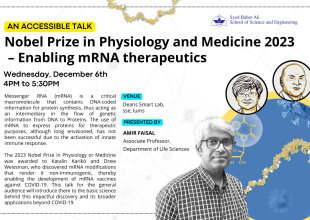
Dr. Amir Faisal received his PhD in Cell Biology from Friedrich Miescher Institute for Biomedical Research/University of Basel, Switzerland in 2004. During his PhD he identified novel roles for Shc protein, an important adaptor downstream of tyrosine kinases, in insulin signaling and cytoskeletal reorganization. He received his first postdoctoral training (2004-2008) in Protein Phosphorylation Laboratory at London Research Institute where he discovered that another adaptor protein, MyD88, couples Protein Kinase C epsilon to Toll like receptors during innate immunity. From 2008 to 2014, he worked at Cancer Therapeutics Unit of Institute of Cancer Research in Sutton first as postdoctoral fellow and later as senior scientist. He played an important role in progression of several drug discovery projects, one of which resulted in discovery of a pre-clinical development candidate that will undergo phase I clinical trials in 2016. After joining LUMS in August 2014, he has been establishing a cancer therapeutics lab at SBASSE.
Learn more at: http://biolabs.lums.edu.pk/cancer
Dr. Amir Faisal received his PhD in Cell Biology from Friedrich Miescher Institute for Biomedical Research/University of Basel, Switzerland in 2004.

ڈاکٹر محمد طارق فیصل آباد، سوئٹزر لینڈ اور جرمنی سے تربیت یافتہ ماہر جینیات ہیں۔ جب جولائی 2009ءمیں انھوں نے لمز سکول برائے سائنس اور انجینئرنگ میں ایک نوجوان محقق اور مُدَرِّس کے طور پرکام کاآغاز کیا تو نہ جانے انھیں ہمارے سکول کے خالی دَر و دیوار میں کیا نظر آیا کہ انھوں نے مغرِب کی بہترین تجربہ گاہوں کو خیر باد کہہ کے اِس خالی بیابان میں اپنا مستقبل آزمانے کی ٹھان لی۔ کِسے معلوم تھا کہ یہ شخص نہ صرف کیمیائی حیات، جینیات، بالائی جینیات (epigenetics)اور حیوانی نشوونُما (developmental biology)کےرُمُوز سے ہی آشنا نہیں، بلکہ جذبے اور عملِ پیہم سے سرشاُر ملک میں موجود اگلی نسلوں کی فکری رہنمائی میں اپنی جان لگا دینے سے بھی پیچھے نہیں ہٹے گا۔
ڈاکٹر محمد طارق نے سکول کے خالی آشیانے میں مکّھیوں کا ایک کاشانہ بنایا اور اس مشاہدہ گاہ میں جدید ترین کیمیائی اورجینیاتی تکنیکوں کا سہارا لے کے حیوانی جسم میں نشوونما کے مختلف مظاہر پہ تحقیق کا کام بڑی سربلندی اور جانفشانی کے ساتھ کیا۔ اس عمل میں نہ صرف انھوں نے مکھی کےنمونے کو استعمال کرتے ہوئے پاکستان میں اپنی نوع کی اولین تجربہ گاہ قائم کی، بلکہ اپنی ولولہ انگیز اور حکمت بھری تدریس کے ذریعے ہزاروں طلبہ اورطالبات کو مستقبل میں اونچی سوچ رکھنے اور خود اعتمادی سے، دنیا کے شانہ بشانہ، عالمی پائے کی تحقیق اور جستجو کے قابل بنا دیا۔ آج آپ کے شاگرد دنیا کے کونے کونوں کی بہترین یونیورسٹیوں میں تحقیق اور تعلیم کے شعبوں سے منسلک ہیں اور ہماری ملی اور قومی اُمّید کو ٹوٹنے سے بچائے رکھتے ہیں۔
بالائی جینیات اور حیوانی نشوونما کے عالمی ماہروں نے ڈاکٹر محمد طارق کے کام کو سراہا۔موصوف نے ایک دُور اندیش مُر بّی کی طرح سکول میں کئی نئے منصوبوں کا آغاز کیا خواہ ان کا تعلق ہماری تعلیم سے ہو یا تحقیق سے، شعبہ حیاتیات کےصدر کی حیثیت سے کئی سال تک اس شعبے کو ترقی کی راہ پر گامزن رکھا اور سب سے بڑھ کر کمال محبّت سے بہت سے دیگر اساتذہ کی رہنمائی بھی کی، جن میں سے بیشتر اِنھی ڈاکٹر طارق کی ترغیب پہ ہمارےسکول کی علمی تحریک سے وابستہ ہوئے۔ ڈاکٹر طارق کو دیکھ کے مجھے لگتا ہے کہ "اُستاد ایسا ہی ہونا چاہیے"۔ درد مند، مُفَکّر، سائنس کا بہترین مُبَلّغ اور سماجی سوچ کا پرچارک۔ اپنے طلبہ اور ساتھیوں کے لیے" رول ماڈل"۔
واقعی یہ ہمارے لیے بہترین مثال ہیں۔ ہمارے پروفیسر ہمارے ادارے اور ملک کا اثاثہ ہونے چاہییں۔ یہی خیال ہمیں اس جانب لے آیا کہ آج مجھے ڈاکٹر محمد طارق کو لمز سکول برائے سائنس اور انجینئرنگ میں بطور پروفیسر تعینات کرنے کا اعلان کرنے میں اعزاز اور خوشی محسوس ہو رہی ہے۔ اُمید ہے کہ پروفیسر ڈاکٹر محمد طارق آنے والے سالوں میں ہمارے ادارے اور ہمارے ملک میں حیاتیاتی علوم پر تحقیقات کے میرِ کارواں بنے رہیں گے اور ہمارے ذہنوں کو منوّر اور دلوں کو بھی گر ماتے رہیں گے۔
محمد صبیح انور ، پروفیسر طبیعیات

ڈاکٹر محمد طارق فیصل آباد، سوئٹزر لینڈ اور جرمنی سے تربیت یافتہ ماہر جینیات ہیں۔ جب جولائی 2009ءمیں انھوں نے لمز سکول…


